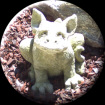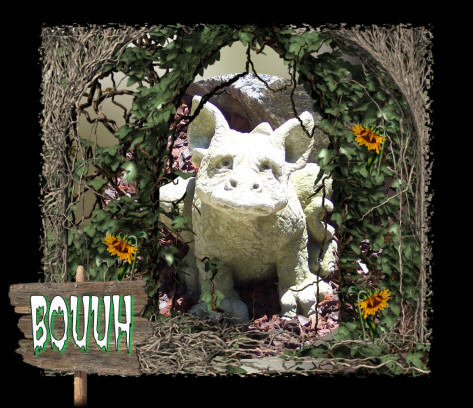
|
"1000 Years ago, we lived in a world that understood our purpose.
It was the age of Gargoyles.
10 Centuries later, we awoke to a world bent on our destruction.
Somehow, we never lost hope.
And today, we come full circle.
A new age has begun. And we live, again."
Gargoyles: The Goliath Chronicles - 1997

 What Are Gargoyles? What Are Gargoyles? 
Gargoyles are guardians, protectors, and they do no harm to anyone. Gargoyles have been known to step in the light for someone strongly willing to see them and have been known to bond with anyone who truly believes they are good. A Gargoyle is a creature that comes to life during the night and turns to stone during the day.
Gargoyles are often see as ugly creatures who do nothing and are often seen as evil doers. In reality Gargoyles ward off evil spirits and presence. Churches often had these creatures on the roof to ward off the devil and demons. Somewhere along the way Gargoyles were seen as evil and were taken down. The primary purpose in Gargoyle life is to protect. The inclination to act as protectors probably comes from a fiercely territorial ancestry.
 Origin of Gargoyles Origin of Gargoyles 
The exact origins of gargoyles lie so far back in the mists of time that we have no certain details as to how they came about. We do know that they are descended from other gargate species, and not aliens or creatures of magic. Gargoyles were the first of the Three Races to come into existence, preceding humans, who themselves preceded Oberon's Children. Gargoyles are, however, younger than the extinct Lost Race. They enjoy a close link to the Earth that may be the result of their great age, and which strongly affects their stone sleep and strict breeding cycles.
Gargoyles are neither mammals, nor reptiles, nor birds. They are part of a biological class called gargates, presumably descended from the great reptiles of the Mesozoic Era or the late Paleozoic Era. The only other known species in this group is the gargoyle beasts, which were domesticated by Gargoyles as companions millennia ago.
 Gargoyle Stone Sleep Gargoyle Stone Sleep 
Gargoyles are particularly notable for entering a sort of stone hibernation, called "stone sleep", during the day, during which they resemble Gothic statues. During daylight, they can quickly heal from injury and illness, and are protected from most natural threats. However, this state makes them easy targets for destruction by their enemies and humans who hate them. In this hibernation, they absorb solar radiation that allows them to store energy; otherwise, a Gargoyle's strenuous activity would require a nutritional intake equivalent to eating three cows a day. Damage during stone sleep can be fatal to a gargoyle. If a gargoyle dies during its hibernation, its body will remain stone.
 Gargoyle Lifespan Gargoyle Lifespan 
While not immortal, Gargoyles can be extremely long-lived, a result of stone sleep which slows or halts their aging process until they wake again the following night. Even in old age they are not as frail and incapacitated as other creatures. It's not uncommon for Gargoyles to live many centuries.
 Gargoyle Clans Gargoyle Clans 
Gargoyles live in clans, gatherings of fairly closely-related Gargoyles. Each clan has a leader, and a second-in-command underneath. Like most animals, but unlike most mammals, they lay eggs. Gargoyles gather their eggs in caves or underground chambers called rookeries, generally set in mountains or high cliffs, their preferred habitat. Here they can be safely watched over.
Gargoyles, despite having large wings, can only fly by gliding on updrafts and on the wind. They have sharp claws that can dig into any kind of solid surface, and they can use this to climb vertical surfaces. They are also excellent swimmers.
In Gargoyle society, males and females are more or less equal. Female Gargoyles are the ones who lay the eggs and nurse the young, of course, but other than that, male and female Gargoyles alike fight as warriors to defend the clan, and female Gargoyles are just as capable as male Gargoyles of becoming seconds-in-command or leaders.
Bouuh would like to share this Gargoyle poem with you
Just follow Bouuh...

|

|






